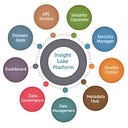GenAI — LLM-Based Agents: Architecture, Best Practices, and Frameworks
LLM-based agents are advanced AI systems designed to solve complex problems that require sequential reasoning, planning, and memory. These agents combine large language models with additional components to create powerful, adaptable tools for a wide range of applications.
Agent Architecture
A typical LLM agent framework consists of the following core components:
- User Request: The initial query or task from the user
- Agent/Brain: The central coordinator, usually an LLM
- Planning: Assists the agent in determining future actions
- Memory: Manages the agent’s past behaviors and knowledge
The agent module, powered by a large language model, serves as the main brain of the system. It is activated using a prompt template that includes important details about the agent’s operation and available tools.
Best Practices
To build effective LLM-based agents, consider the following best practices:
- Use natural language for agent names (e.g., “Customer Help Center Agent”)
- Define concise goals that clearly describe the agent’s purpose
- Provide quality instructions that reflect a step-by-step approach to problem-solving
- Include at least four examples for each agent, covering happy path scenarios
- Focus on the quality and quantity of examples rather than perfectly precise instructions
- Reference tools in examples when the agent is designed to use them
- Validate tool schemas and use meaningful names for the
operationIdfield - Handle empty tool results to prevent hallucinations
- Create focused agents for specific tasks rather than large, complex ones
- Avoid loops and recursion when linking agent apps
Orchestration Frameworks
Several frameworks and tools are available for building and orchestrating LLM agents:
- LangChain: A popular framework for developing LLM-powered applications
- AutoGen: Microsoft’s framework for building LLM applications with multiple agents
- Llama Index: A data framework for creating LLM applications with advanced retrieval capabilities
- Haystack: An end-to-end NLP framework for building NLP applications
- Embedchain: A framework for creating ChatGPT-like bots for custom datasets
Functions and Tools
LLM agents can use various functions and tools to enhance their capabilities:
- Web search: Retrieving up-to-date information from the internet
- Code execution: Running and testing code snippets
- Data analysis: Processing and analyzing structured data (e.g., CSV, JSON, Pandas DataFrames)
- API integration: Connecting to external services and databases
- Text summarization: Condensing large amounts of text
- Language translation: Converting text between different languages
These tools allow agents to perform specialized tasks and access external information, greatly expanding their problem-solving abilities.
LangGraph: A Closer Look
LangGraph is an emerging framework for building stateful, multi-agent applications using LLMs. It builds upon the popular LangChain library and introduces several key concepts:
- Stateful Agents: LangGraph allows the creation of agents that maintain state across interactions, enabling more coherent and context-aware responses.
- Directed Acyclic Graphs (DAGs): The framework uses DAGs to represent the flow of information and tasks between agents, allowing for complex, multi-step workflows.
- Event-driven Architecture: LangGraph employs an event-driven approach, where agents react to specific events or triggers, enabling more dynamic and responsive systems.
- Cyclic Workflows: Unlike traditional DAGs, LangGraph supports cyclic workflows, allowing for iterative processes and feedback loops within agent interactions.
- State Machines: The framework incorporates state machine concepts, enabling agents to transition between different states based on inputs and conditions.
- Modular Design: LangGraph promotes a modular approach to agent design, making it easier to create, test, and maintain complex agent systems.
By leveraging these features, developers can create sophisticated LLM-based applications that handle complex, multi-step tasks with improved coherence and adaptability.In conclusion, LLM-based agents represent a significant advancement in AI technology, combining the power of large language models with specialized tools and frameworks. By following best practices and utilizing the right orchestration frameworks, developers can create intelligent agents capable of solving complex problems across various domains.
About — The GenAI POD — GenAI Experts
GenAIPOD is a specialized consulting team of VerticalServe, helping clients with GenAI Architecture, Implementations etc.
VerticalServe Inc — Niche Cloud, Data & AI/ML Premier Consulting Company, Partnered with Google Cloud, Confluent, AWS, Azure…50+ Customers and many success stories..
Website: http://www.VerticalServe.com
Contact: contact@verticalserve.com
